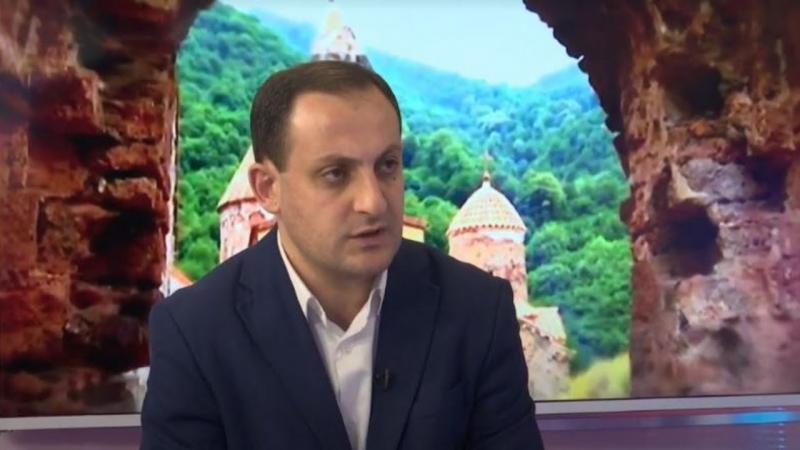
Pashinyan intentionally or unintentionally ignores key legal facts and documents. Stepan Hasan-Jalalyan
Political scientist Stepan Hasan-Jalalyan writes on his Facebook page. "2024 On February 11, during an interview with the British newspaper The Telegraph, Nikol Pashinyan specifically stated the following.
• "...Alma-Ata's declaration states that these republics (the union republics that signed the declaration - S. H.-J.) accept the existing borders, that is, whatever border existed at that moment, they recognize the inviolability of those borders."
In relation to the quoted, in the context of the settlement of the Azerbaijani-Artsakh conflict, it is necessary to mention the following.
The heads of 11 of the 15 republics of the USSR met in the capital of Kazakhstan, Alma-Ata, in 1991. signing the Alma-Ata declaration on December 21, they specifically recorded: "recognizing and respecting each other's territorial integrity and the inviolability of existing borders".
What does "existing boundaries" mean? This means at the time of signing the declaration, that is, in 1991. As of December 21, existing limits. And what were the borders of Azerbaijan in 1991? as of December 21. The borders of Azerbaijan in 1918-1920 were the borders of the existing Azerbaijan Democratic Republic. Why, because today's Azerbaijan is the country of 1918 proclaimed on May 28 and until 1920 the successor of the Azerbaijan Democratic Republic, which existed on April 28.
The point is that the Supreme Council of the Republic of Azerbaijan in 1991 on August 30, adopted the declaration "On restoration of state independence of Azerbaijan", and on October 18 of the same year, the same body also adopted the constitutional act "On restoration of state independence of Azerbaijan". With both the declaration and the constitutional act, Azerbaijan declared that the current Republic of Azerbaijan renounces the succession of Soviet Azerbaijan and declares itself as the Republic of Azerbaijan in 1918. proclaimed on May 28 and until 1920 the successor of the Azerbaijan Democratic Republic, which existed on April 28.
Based on "On the procedure for solving issues related to the withdrawal of the Union Republic from the USSR" in 1990 of the USSR. on the law of April 3, in particular on Article 3, which reserved the right to the peoples of autonomous entities to independently determine their state-legal status in the event of the withdrawal of the Union Republic from the USSR, the Nagorno-Karabakh regional and Shahumyan regional councils of people's deputies, councils of all levels the joint session with the participation of deputies, recording that Azerbaijan, leaving the USSR, declared its independence, restoring the 1918-1920. state independence, on September 2, 1991, adopted the declaration "On the Proclamation of the Republic of Nagorno-Karabakh" within the boundaries of the Nagorno-Karabakh Autonomous Region and the adjacent Shahumyan region. And according to the results of the independence referendum held on December 10, 1991, the Republic of Artsakh declared its independence.
Thus, at the time of signing the Alma-Ata declaration, that is, in 1991. on December 21, the Republic of Artsakh became an independent state de facto for more than 3 months, and de jure for 11 days.
"Talking about the territories at the time of joining the Soviet Union, you know, I think that discussions about the period of being part of the Soviet Union are not appropriate in this context at all. Why, because I have already said that the agreement between Armenia and Azerbaijan was recorded in writing in a tripartite and quadrilateral format, that the two countries recognize each other's territorial integrity on the basis of the Alma-Ata Declaration.
It is clear from the above that Nikol Pashinyan intentionally or unintentionally ignores key legal facts and documents during the settlement of the issue of delimitation and demarcation between Armenia and Azerbaijan. In fact, in this way, he wants to give a political solution to the mentioned question.
If Nikol Pashinyan does not take into account that the Supreme Council of the Republic of Azerbaijan in 1991 With the declaration "On the restoration of the state independence of Azerbaijan" adopted on August 30 and the constitutional act "On the restoration of the state independence of Azerbaijan" adopted by the same body on October 18 of the same year, current Azerbaijan renounced the succession of Soviet Azerbaijan, that is, also the borders of Soviet Azerbaijan and declared itself in 1918-1920 the successor of the existing Republic of Azerbaijan, then it means that he wants to settle the issue of demarcation and demarcation between Armenia and Azerbaijan not legally, but politically.
Meanwhile, a more or less guaranteed solution to such an issue can be achieved not by political, but by legal means. Because the political way cannot guarantee a quick, fair and lasting settlement of the given issue. In the case of a political solution to the issue, occupying and genocidal Azerbaijan will have more opportunities to carry out military aggression against the Republic of Armenia in the future."
Add new comment